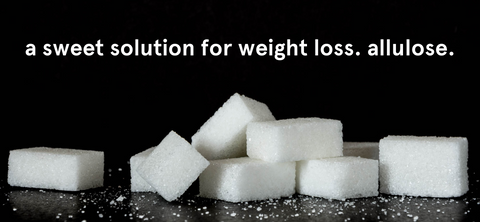
Soylent carbohydrate design: a low-glycemic, slow carb approach
Soylent is all about Complete Nutrition to “Fuel Good”. That includes our carbohydrates too.
There’s a lot of misconceptions today that all carbohydrates are bad. The truth is, carbs are essential nutrients, although it’s true that many foods are too high in the wrong types of carbs.
Why is low-glycemic so important?
Low-glycemic foods are foods that minimize blood sugar spikes after you eat, and provide sustained energy. These foods are metabolized in a way that slowly releases sugar in the bloodstream.
Blood sugar spikes are notorious for making you feel tired and lethargic after you eat. Over time, numerous blood sugar spikes lead to insulin resistance and a host of health issues.
For example, high glycemic foods, when over consumed, are known to accelerate weight gain, promote insulin resistance, increase oxidative stress and inflammation, and increase the likelihood of diabetes, metabolic and cardiovascular diseases.
Low glycemic is the key to sustained energy
Blood sugar spikes caused by foods can be predicted by paying attention to a food’s Glycemic Index, called “GI” for short.
The GI is a measure of a person’s blood sugar response on a scale of 0-100 after eating a particular food. This response is compared to after eating pure sugar (glucose), which has a GI value of 100).
High-glycemic foods cause a large, rapid rise in blood sugar. In response, your body produces a spike of insulin.
Low-glycemic foods are generally considered those with a GI value of 55 or less, about half of the GI value of pure sugar.
The GI value of Soylent drinks ranges between 36-44, making them low glycemic foods.
What makes Soylent low-glycemic?
You may have heard that processed foods, and liquid diets typically including fruit juices have a high glycemic index. That is often the case.
But Soylent is not a typical processed food. (Learn about why some processed foods can be good.)
There’s a few key things about Soylent’s engineering that make it smart for your health -- and low-glycemic:
1. Balanced macronutrients.
The combination of balanced macronutrients in Soylent lowers the absorption of its carbohydrates, which is thought to lower its glycemic index.
The combination of healthy fat, plant protein and fiber slow the rate of absorption of carbohydrates, leading to smaller increases in blood sugar levels -- which is the exact definition of low-glycemic.
2. Low in sugar (<10 g/serving), with no added sucrose or fructose.
Sucrose is added in abundance to almost everything we eat... except for Soylent. Since sucrose is a disaccharide with a moderately high GI value of 65, we removed it and replaced it with lower-GI carbohydrates.
Although fructose is low-glycemic, we don’t add it. That’s because fructose doesn’t suppress your appetite and does not make you feel full, like Soylent does. And, fructose may have other health consequences, such as increasing plasma triglycerides, when consumed in large amounts.
3. Slowly digestible, low-glycemic carbohydrates.
Soylent has rapidly digestible carbohydrates, like maltodextrin made from corn, that help to satisfy your hunger quickly, and provide a and immediate source of energy.
To provide you with sustained energy, we also use slowly digestible carbohydrates (or “slow carbs”) like isomaltulose, a sugar disaccharide found in honey and made from beets. With a relatively low GI value of 32, isomaltulose is a low-glycemic carbohydrate.
Isomaltulose is unique as a carbohydrate source for three main reasons:
1. Isomaltulose is slowly and completely digested. Your body converts all of it into energy over a longer period of time, helping you to keep going throughout the day.
2. Isomaltulose provides steady and sustained energy (see below chart). Unlike most carbs, isomaltulose is slowly metabolized, leading to a smaller spike in blood sugar and a smaller insulin response.
3. Isomaltulose also promotes the burning of fat, known as fat oxidation. Due to a lower insulin response, your metabolism switches to burn more fat.

4. A good source of fiber.
Soylent drinks provide 10% or more of your recommended daily value of fiber.
Fiber is super important as a prebiotic, to feed your microbiome and promote a healthy gut. Fiber also helps to lower the glycemic index of our product.
Soylent also has soluble fiber from corn, and insoluble fiber from vegetable cellulose, both sustainably grown plant fiber sources that work together to help slow the absorption of carbohydrates and lower the glycemic index.

5. Low Glycemic Load.
As we all know, it’s not just about the kind of the calories you eat, but the amount of them, too.
Glycemic load, or GL, goes a step beyond glycemic index, since it also accounts for the amount of carbohydrates consumed.
Soylent is engineered to provide low glycemic load, which is calculated by multiplying the GI by the amount of carbohydrates per serving, then dividing by 100.
Take the Soylent Cacao RTD drink, for example. With 37 grams of carbs, and a GI value of 37, the glycemic load comes out to only 14 units per serving.
(Compare Soylent to this list of the glycemic load of some common foods and beverages... Let’s just say that bagel and orange juice isn’t doing your health any favors.)
To sum up why Soylent is special
It’s not just about Complete Nutrition, with highly digestible soy protein, healthy fats, and 26 essential vitamins and minerals.
It’s also about Carbohydrate design supporting a lower glycemic index AND a lower glycemic load compared to many foods we typically choose to eat.
Making Soylent all that much sweeter -- for your health. Cheers!







